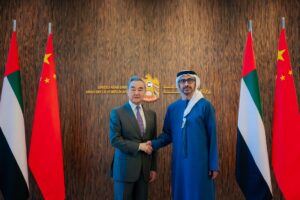China-Pakistan Strategic Alliance: Implications for Regional Security

China-Pakistan partnership is now engagingly high in South Asian geopolitics, shaping up how security operates in the region significantly. The partnership, based on shared interests and a history of collaborative actions, continues evolving and affects balancing out the troubled historical past of the region with its competing economic aspirations and broader global strategic interests. As the relation deepens, it still remains one of the key variables in the ongoing remaindering of the world and regional powers.
It’s also serving well as a symbiotic relationship for both countries; as in, maximizing their competitive advantage in regional and international relations while not letting it come between the friendships that will lead changing course geopolitical concepts in South Asia. Such dynamic character of the partnership also indicates that such collaboration becomes all the more significant within the context of an evolving China-Pakistan relationship in shaping the overall order of international relations.
This alliance emerged in the early 1950s and gained visibility in the 1960s, particularly during the Indo-China conflict, as Pakistan rendered diplomatic support to China. Since then the relationship has evolved into a multi-dimensional partnership encompassing defense, economy, infrastructure development, and politics. Fundamental areas of the alliance concern assuring a certain level of security guarantee for the parties involved, counterbalancing regional rivals, and advancing economic objectives.
This is one of the key features of the partnership that today really talks about defense and security cooperation. China has been a longtime supplier of military hardware to Pakistan, ranging from advanced fighter aircraft and naval vessels to missile systems. Such support has improved Pakistan’s capacity for defense, making it possible for Pakistan to pursue a strategy of parity with respect to its traditional rival, namely India. The sharpening of strategic integration enhances the readiness of both countries to deal with regional threats through joint exercises and intelligence sharing.
The Economic Corridor serves as the economic perspective of the Sino-Pakistani alliance as presented by CPEC. The project is actually a flagship BRI project for China. The CPEC is a mega investment in infrastructure, energy, and trade, including such projects as highways and railways, power plants, and special economic zones. CPEC is at the same time a life-saving line for Pakistan as it aspires to attain an economically stable future through long term resolutions to the chronic energy shortages and infrastructural modernization needs. CPEC would open to China access to the Arabian Sea, reduce its dependence on the Strait of Malacca, and secure a vital trading route. CPEC clearly has strategic implications beyond economics, as it epitomizes growing Chinese influence in South Asia and the Indian Ocean.
China-Pakistan relations are becoming deeper and, at the same time, have far-reaching implications for regional security. This solidifying bond between the two countries has reinforced the apprehensions of India vis-a-vis its strategic priorities, thereby leading it to bolster defense capabilities and dependencies with other emerging regional and global powerhouses like that with the United States and Japan. This growth has another element that consolidates the already complex mosaic of alliances and rivalries, which makes volatile conditions ripe for additional conflict in the region.
China-Pakistan partnership further complicates another dimension for Afghanistan, a historically important battleground that continues to lie on the shores of competition from regional powers. Both countries have remained active in efforts directed at mobilizing the Afghan peace process aimed at the stabilization of Afghanistan from terrorism that might threaten interests for either country. There is also an element of suspicion concerning their motives from other stakeholders, thus further complicating the efforts toward an enduring peace in Afghanistan.
It seems that the global scenario is reflecting the shifting dynamics in the great power competition of which China-Pakistan alliance is a part. The more China gets involved, the more its partnership with Pakistan makes a counterbalance against the US presence in South Asia and coalitions with India and other regional powers. This geopolitical competition has generated a very complex terrain in which the actions of one player invariably invoke responses by others, thus further complicating the regional security landscape.
In conclusion, this alliance will prove to be one of the most important determinants of South Asia’s future security environment, being between two strategic partners: China and Pakistan. Although opportunities exist for economic development and strategic cooperation, the threats to regional stability and global geopolitics cannot be overstated. This will no doubt have implications for the calculation of both regional and global powers, stretching beyond the confines of China and Pakistan. Indeed, daunting requirement painstaking diplomacy, a balancing act in rivalries of the region, and engagement to shape peace and stability over one of the most volatile areas in the world. The alliance will also be an example of creative thinking in address some of the emerging challenges, creating sustainable economic frameworks to take care of conflict through multilateral dialogues ensure the future will secure and prosperous.

